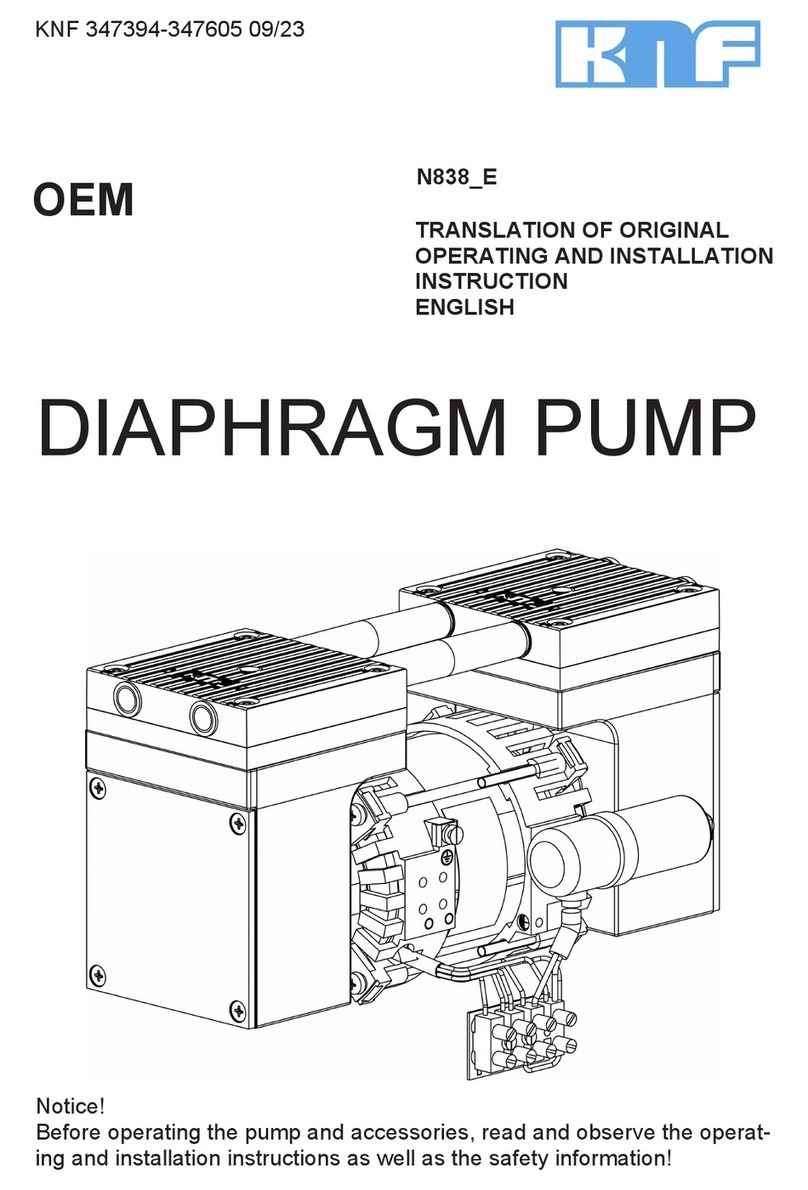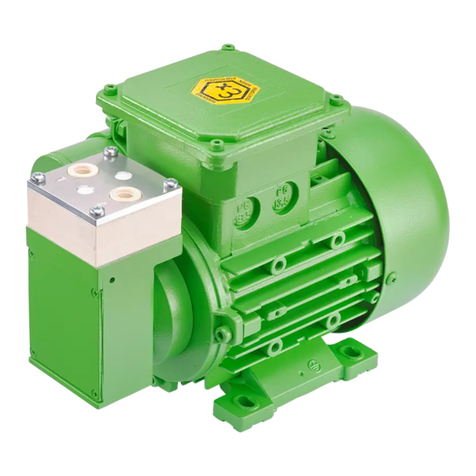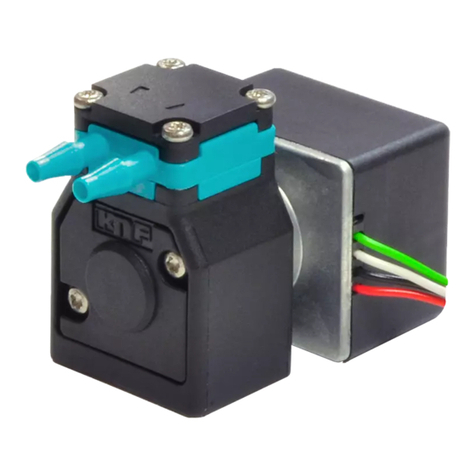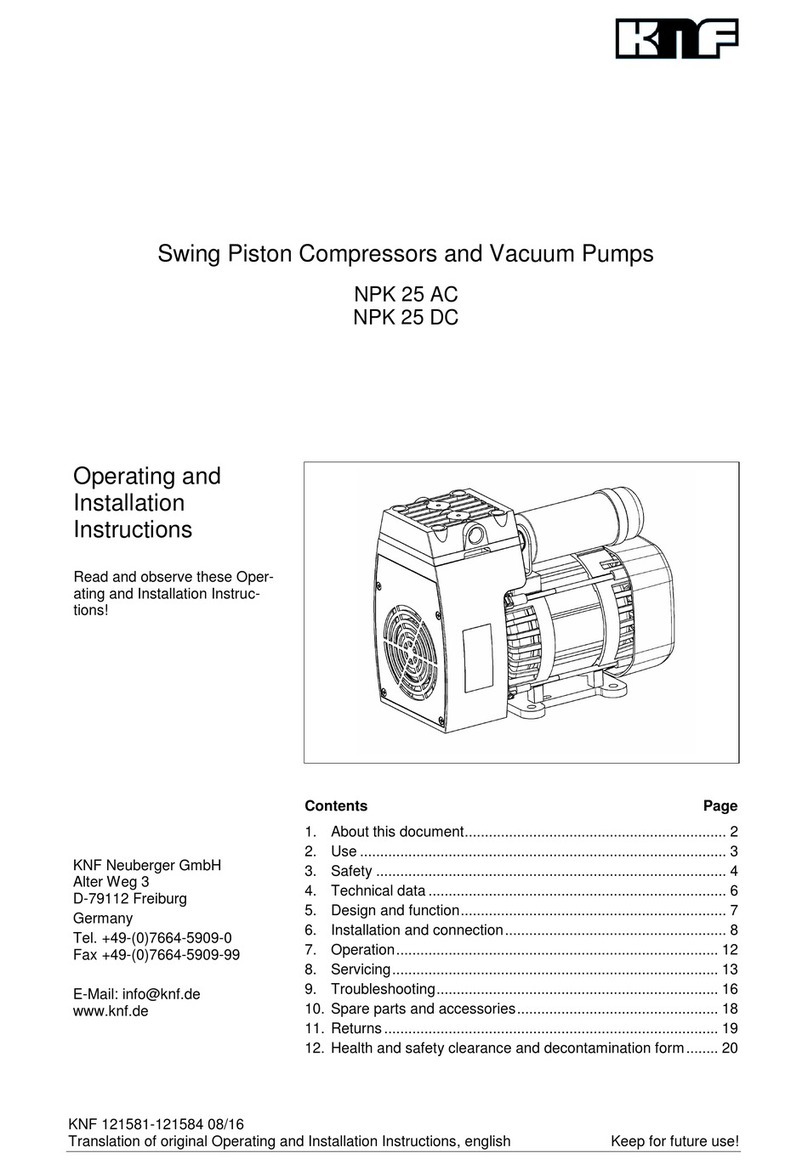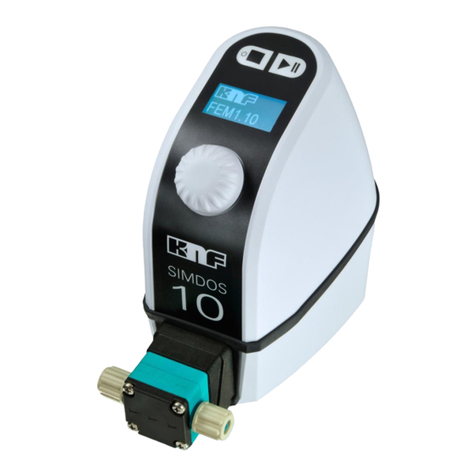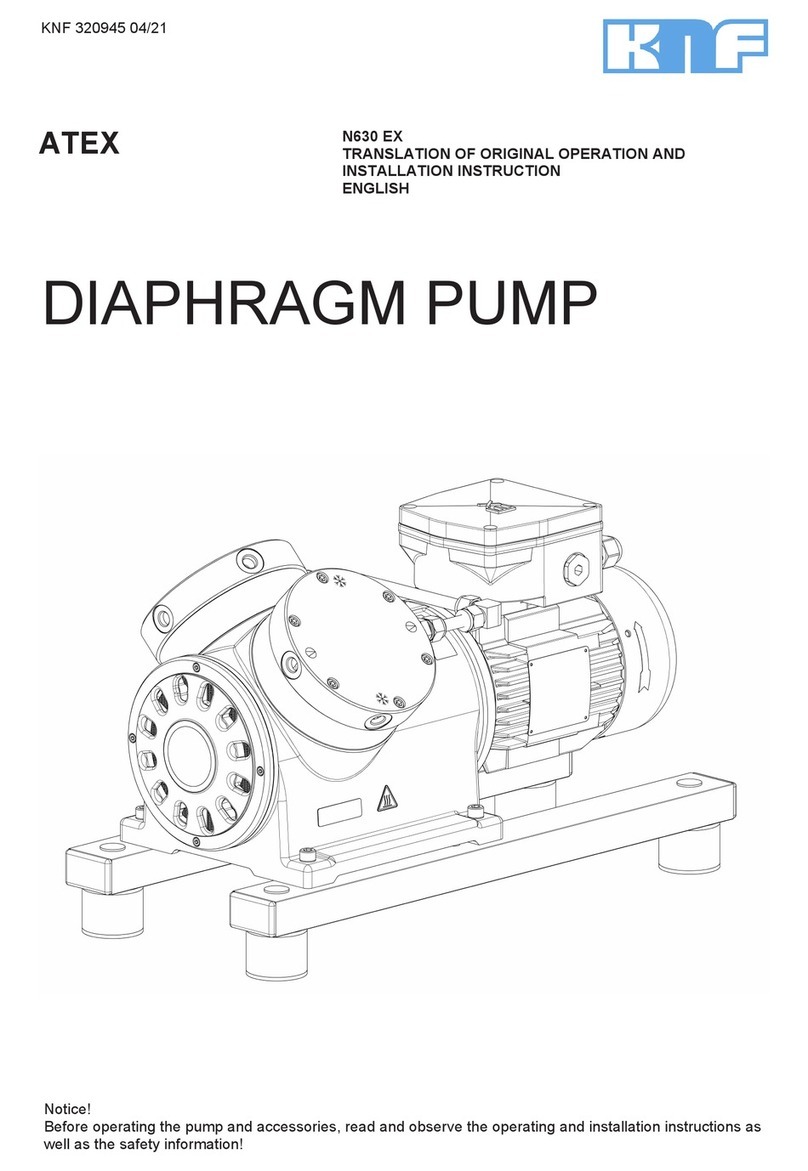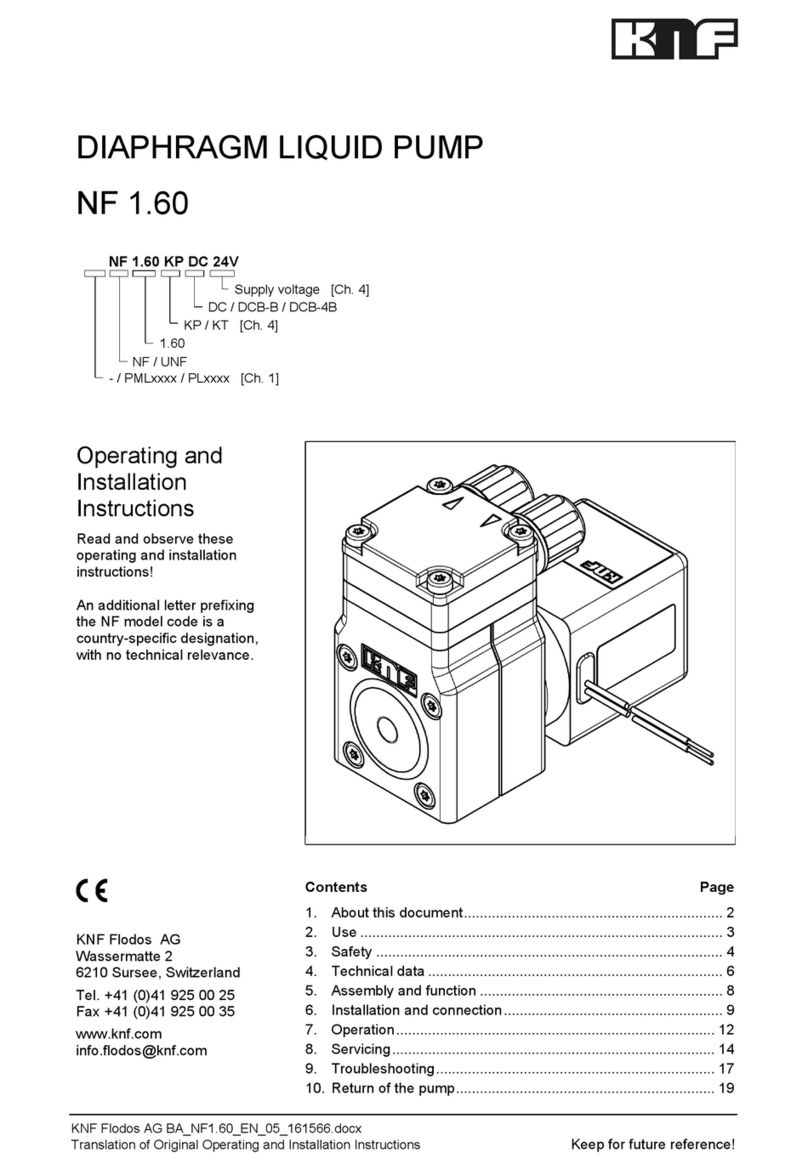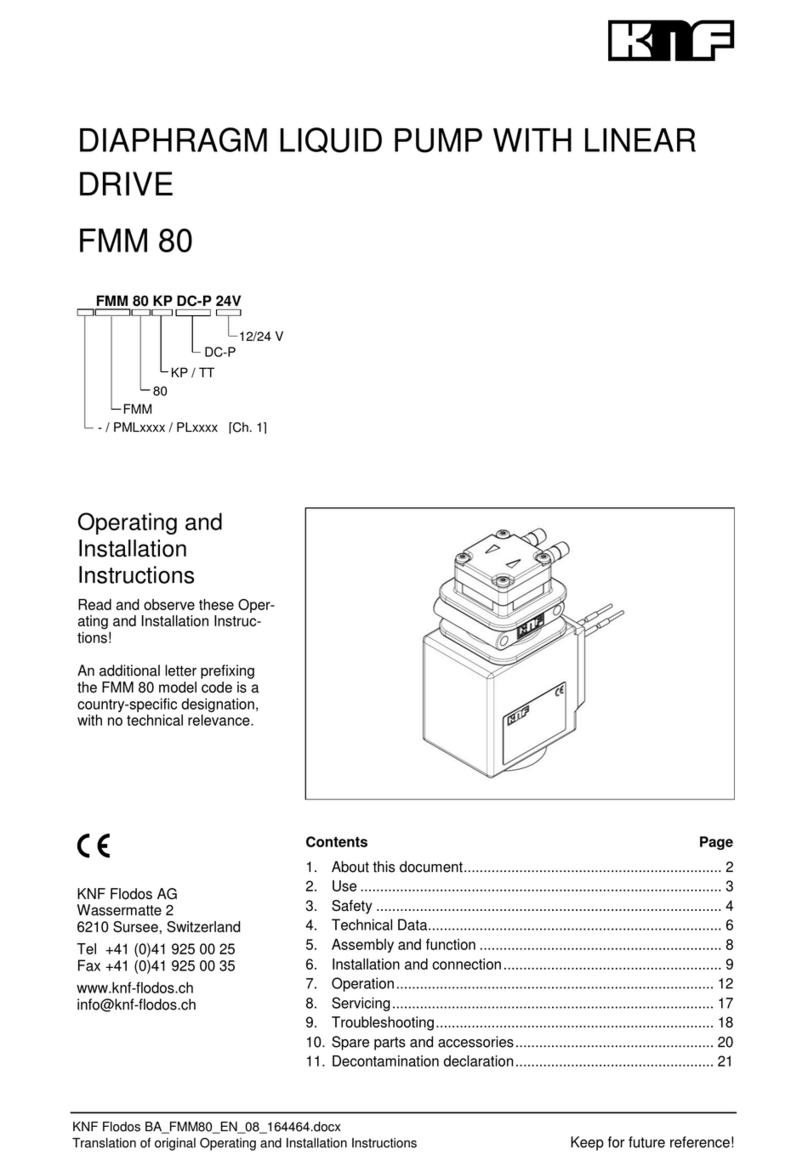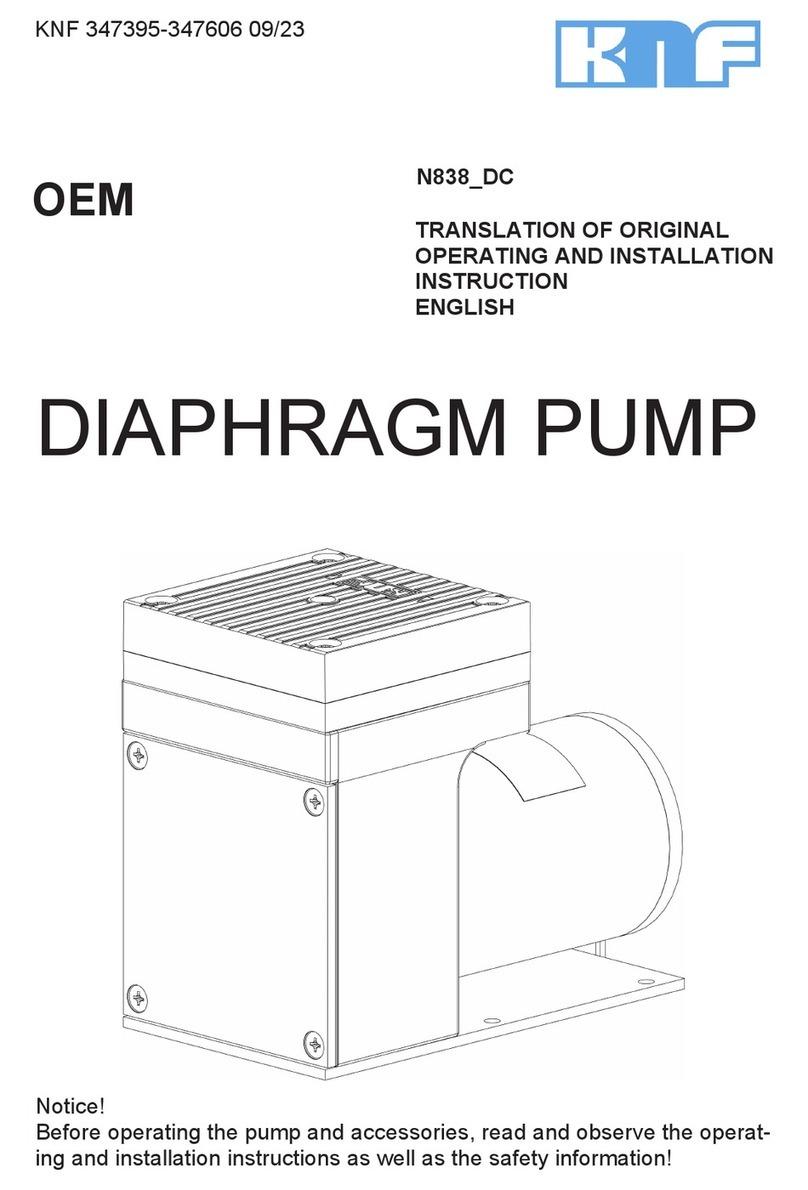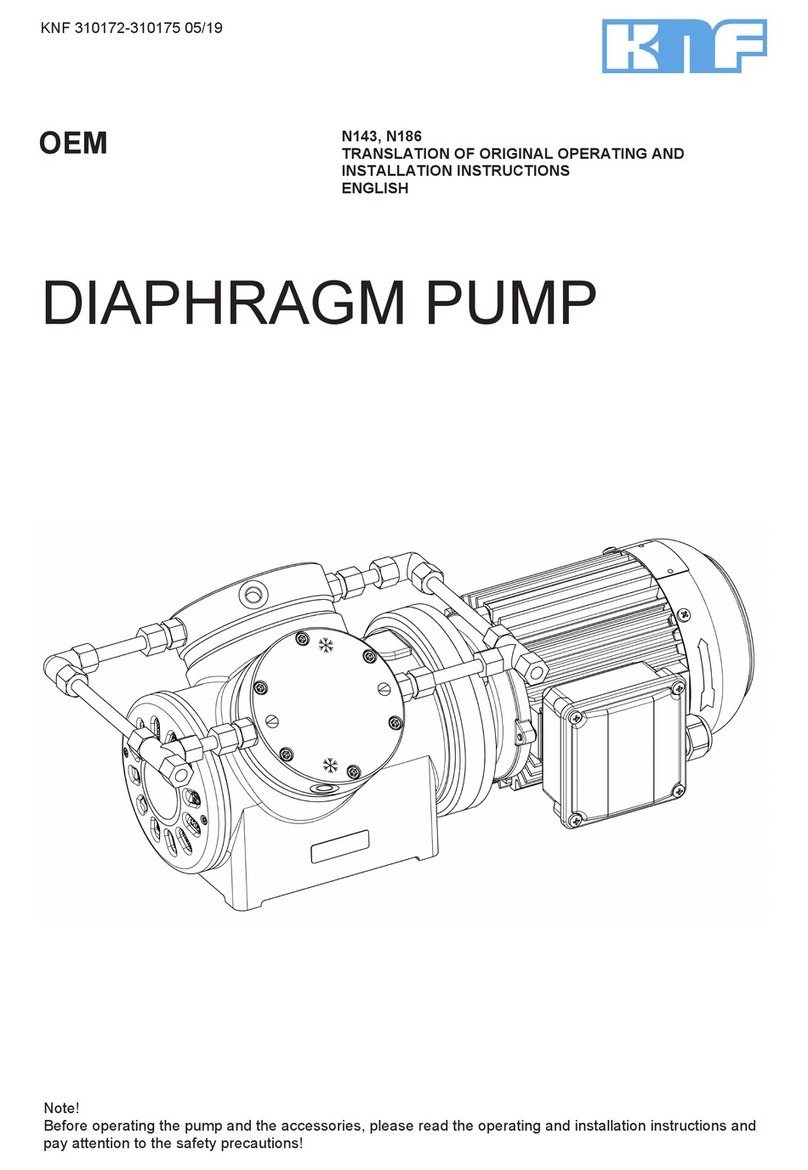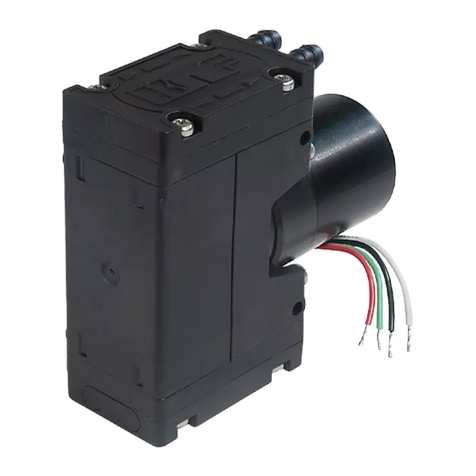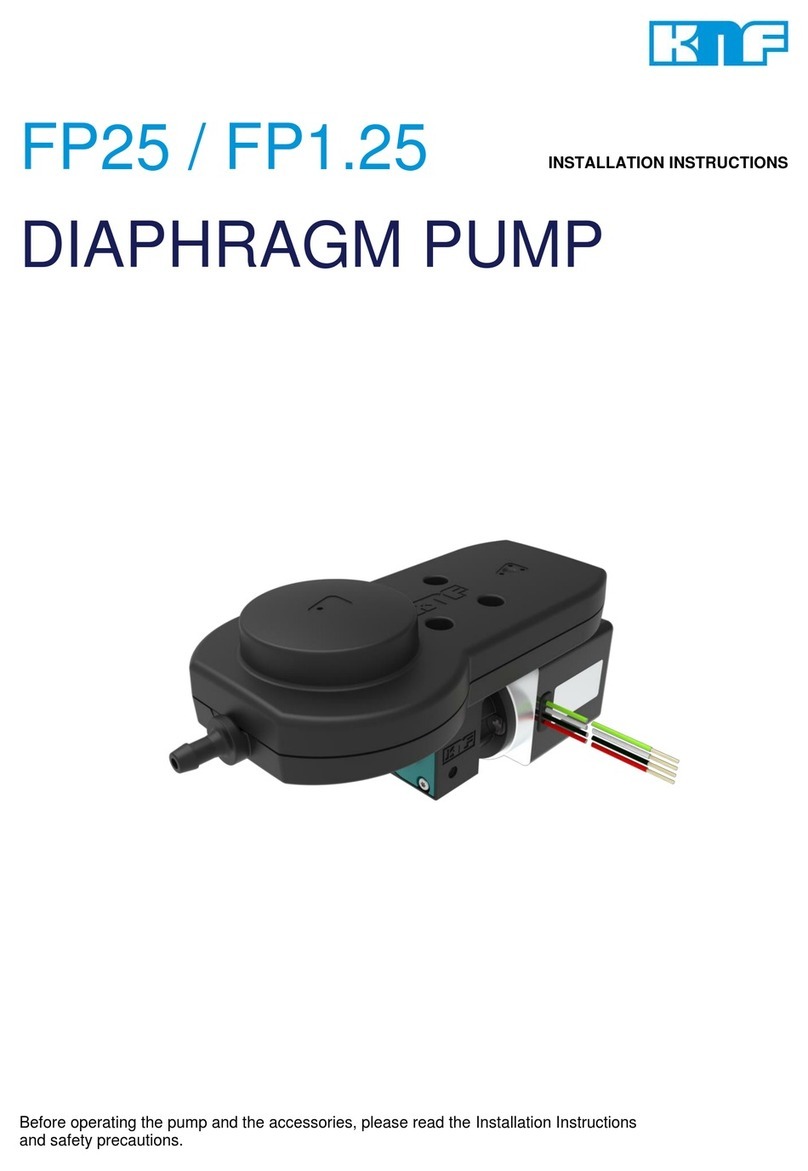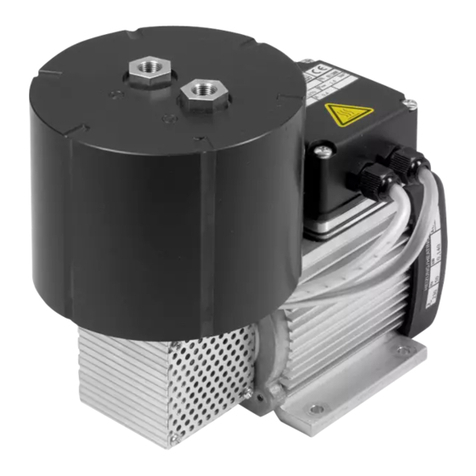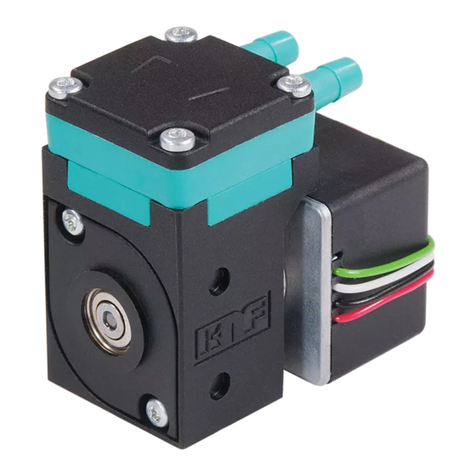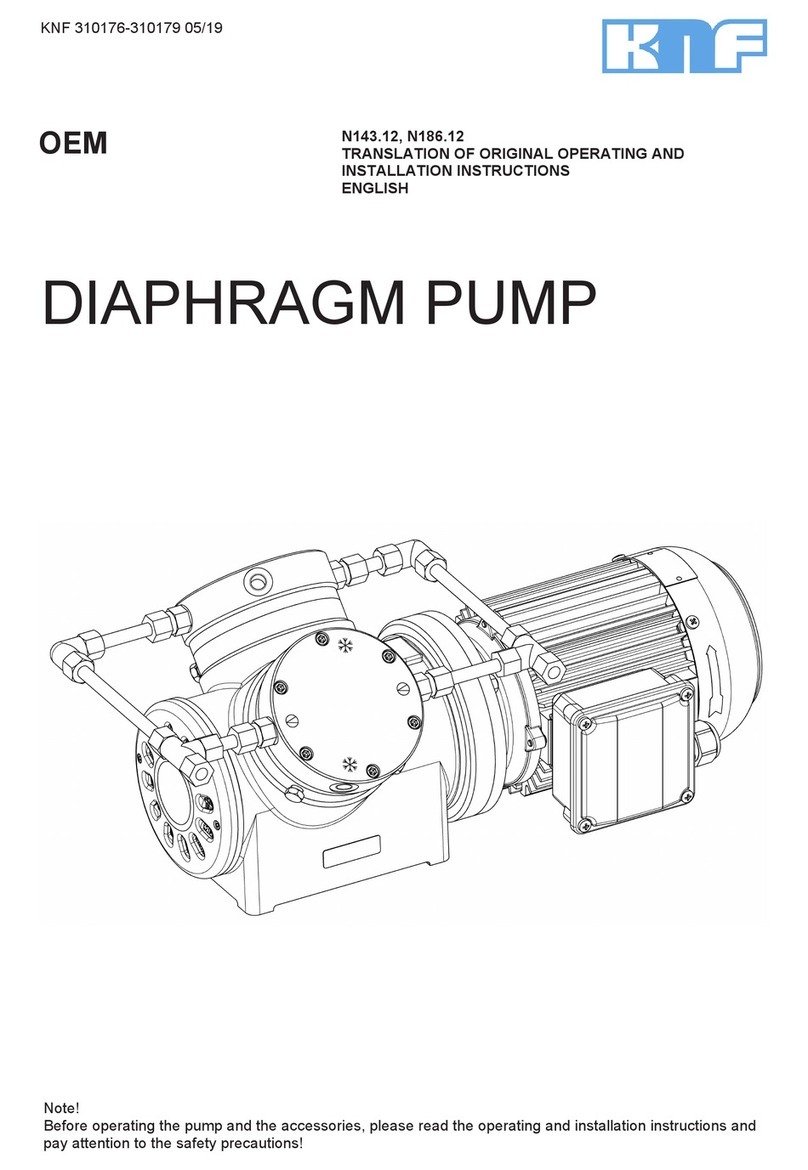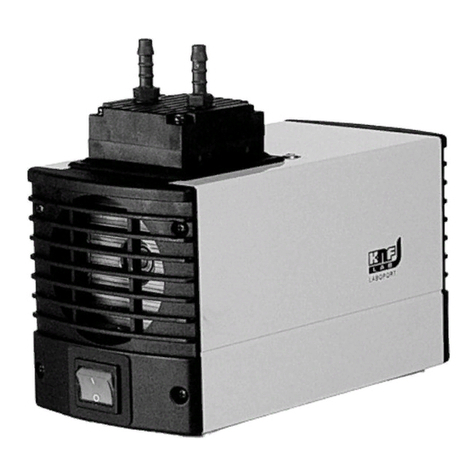
Safety Diaphragm Pump N936
6 Translation of Original operating and installation instruction, English, KNF 320276-320275 09/23
2.3 Working in a safety conscious manner
Observe the regulations on accident prevention and safety during all work
on the pumps and during operation.
Avoid contact with the pump heads and housing parts because the pump
heats up during operation.
When working on the pump, make sure that the pump is disconnected
from mains and without power.
When connecting the pump to the electrical mains, observe the corre-
sponding safety rules.
Ensure that no hazards arise from gas flowing when gas connections are
open, from the effects of noise or from hot, corrosive, dangerous and envi-
ronmentally hazardous gases.
Make sure that an EMC-compliant installation of the pump is ensured at all
times to prevent the occurrence of dangerous situations.
2.4 Operating conditions
Only use the pump in perfect technical condition, for its intended purpose,
safely and with an awareness of the dangers and in observation of the op-
erating instructions.
Only install and operate the pumps in accordance with the operating pa-
rameters and conditions described in Chapter 3 Technical data.
Only pumps that are fully assembled and in the condition as delivered may
be operated.
Make sure that the installation location is dry and that the pump is pro-
tected from rain, splash water, gushing water, dripping water and other
contamination.
Check the tightness of the connections between the pipes of the applica-
tion and the pump (or the connection of the pump) at regular intervals.
Leaky connections carry the risk of releasing dangerous gases and vapors
from the pump system.
2.5 Media
Requirements of pumped media Before transferring a medium, check whether the medium can be trans-
ferred without risk in the specific application.
Take note of any change in the state of matter (condensation, crystalliza-
tion).
Before using a medium, check the compatibility of the media-contacting
components (see 3 Technical data) with the medium.
Risk of dangerous gas mixtures during pump operation if diaphragm
breaks: Depending on the medium being transferred, breakage of the di-
aphragm can result in a dangerous mixture if the medium mixes with the
air in the compressor housing or the surroundings.
Only transfer gases that remain stable under the pressures and tempera-
tures that arise in the pump.
Handling of
hazardous
media
Upon breakage of the diaphragm and/or leaks, the transferred medium
mixes with the air in the surroundings and/or in the pump housing.
Make sure that a dangerous situation cannot arise as a result.
When pumping hazardous media, observe the safety regulations for the
handling of said media.
Handling of combustible media Note that the pump is not designed to be explosion-proof.
Make certain that the temperature of the medium is always sufficiently be-
low the ignition temperature of the medium so as to prevent ignition or ex-
plosion. This also applies for abnormal operating situations.


















